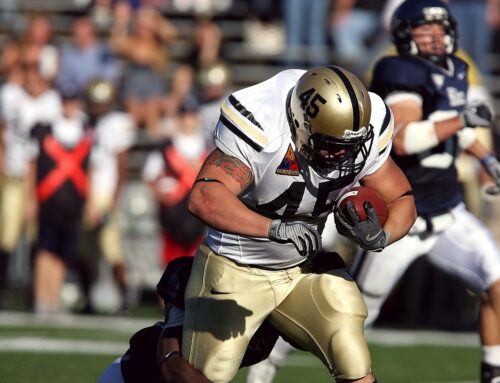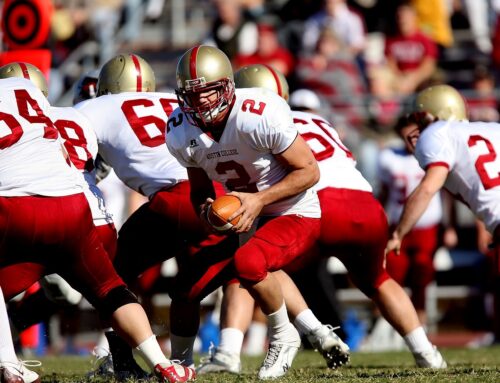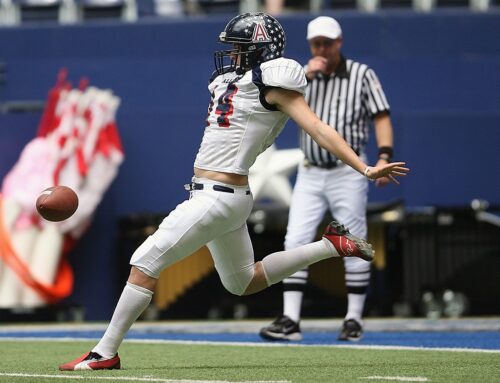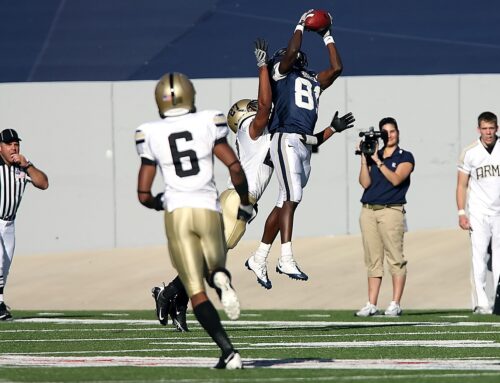Lessons from Josh Appelbaum’s The Everything Guide to Sports Betting
Published on: July 6, 2024
Updated on: August 25, 2024
Category: Advice & Tips
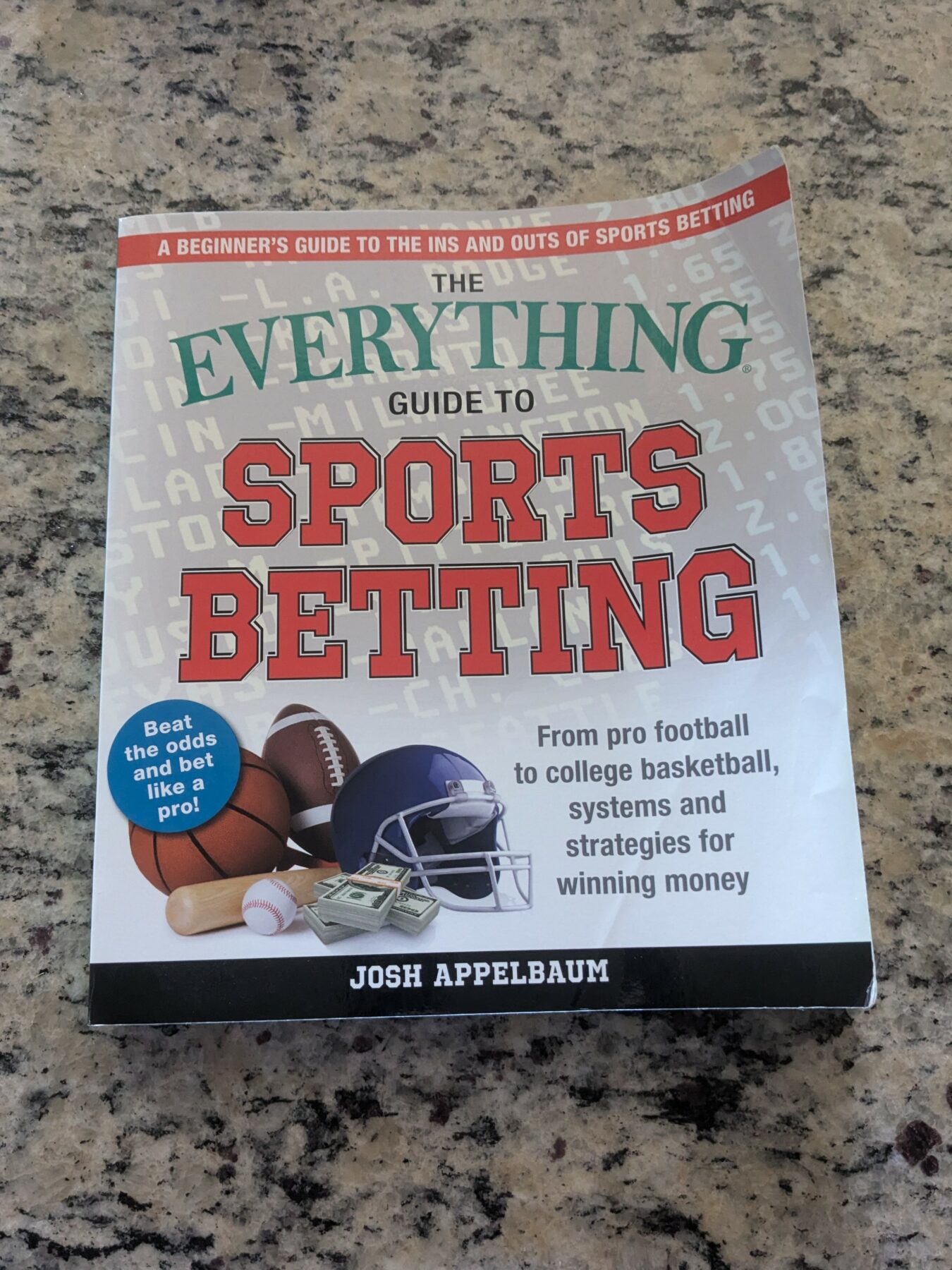
The following post explores lessons from Josh Appelbaum’s ‘The Everything Guide to Sports Betting’.
Published in 2019, Josh Appelbaum’s ‘The Everything Guide to Sports Betting’ provides a comprehensive resource into the sports betting world for both novice and experienced bettors.
Read: Lessons from Billy Walters’ Gambler: Secrets From a Life at Risk
Related: Lessons from Mike Lee’s Betting the Bases
Despite some information in this book being a bit dated (sports betting changes so quickly), the fundamental advice is rock solid and time-tested.
Here are the top lessons from ‘The Everything Guide to Sports Betting’.
Overview
In chapters 1-10, Appelbaum lays the foundation for being a successful sports bettor, covering the basics like bankroll management and managing expectations. Chapters 1-10 cover key topics such as personal bias, alternative betting, contrarian betting, sharp action, betting systems, and more.
Chapters 1-10 are really important in the grand scheme, however the focus of this article is spotlighting sport-specific nuggets of wisdom that Appelbaum offers.
Baseball
In Chapter 11, entitled ‘How to Bet Baseball’, Appelbaum covers baseball betting.
Avoiding Big Favorites
Sportsbooks know that casual bettors love betting favorites. As a result, oddsmakers will shade their lines toward favorites, specifically targeting the most popular public teams. By backing these big favorites, you are playing right into the sportsbooks’ hands, by consistently getting overvalued, overpriced odds. Since 2005, favorites of -150 or higher have gone 7,345-4,258, which translates to 63.3%. On the surface, that sounds pretty impressive. However, because bettors are forced to pay such a steep price, betting these big favorites would have lost bettors -215.72 units.
Divisional Underdogs
If baseball bettors avoid big moneyline favorites and consistently focus on valuable plus-money underdogs (think +120, +130, +150), they can win at a below 50 percent clip but still finish the year with positive units won. Since 2005, divisional underdogs have gone 6,557-8,555 (43.4%). This sounds like a terrible losing record, but because of the plus-money payouts it’s produced +59.23 units. Meanwhile, underdogs playing outside the division have gone 7,701-10,620 (42%), losing -573.60 units.
Road Divisional Underdogs with High Totals
Divisional underdogs become even more profitable if we layer in two more filters. First, focus on road divisional underdogs. Just like all other sports, public baseball bettors overvalue home-field advantage. Since 2005, road divisional underdogs have gone 4,340-5815 (42.7%), producing +123.12 units.
If we layer in games featuring high totals, road divisional underdogs get even better. Since 2005, road divisional underdogs with a high total of 8.5 or more have gone 2,606-3,400 (43.4%), producing +148.24 units.
Bet Against the Public
Betting against the public is a core philosophy that applies across the entire betting marketplace. However, each sport has its own sweet spot. In baseball, the most profitable contrarian threshold is teams getting less than 20% of moneyline bets. Since 2005, teams getting less than 20% of bets have gone 1,265-1,878 (40.2%), producing +70.98 units.
Reverse Line Movement
When betting baseball, or any other sport, you always want to be on the sharp side and align yourself with the professional bettors. Reverse line movement is a clear indication that sharp bettors have taken a side. It’s a dead giveaway that smart money is moving the line.
The moral of the story is to always look for sharp action in the form of reverse lie movement when betting against the public.
Bad Teams After Wins
The truth is that bad teams coming off a win are supremely undervalued, which provides an excellent buy-low opportunity for contrarian bettors. In baseball, a bad team is defined as a team that has a win % of .400 or less, meaning they win 40% or less of their games. When these teams lost their previous games, they’ve gone 2,804-3,475 (44.7%), losing -95.28 units. However, when these teams won their previous game, they’ve gone 1,500-1,648 (47.6%), winning +162.93 units. It’s night and day for bad teams after a loss versus after a win.
A $100 bettor taking every bad team off a win has profited $16,293 since 2005.
Windy Unders
No single factor has a greater impact on totals than the wind. You should never bet an over or an under without first knowing which direction and how hard the wind is blowing.
Since 2005, when the wind is blowing in, the under has gone 1,065-877 (54.8%), winning +118.42 units. If the wind is blowing in harder at five miles per hour or more, the under improves to 819-659 (55.4%), winning +105.61 units.
NFL
In Chapter 12, entitled ‘How to Bet the NFL’, Appelbaum covers the NFL.
Key Numbers for Spread
The most common margin of victory in the NFL is 3 points. Since 2003, 15% of all NFL games finished with one team winning by exactly 3 points over the opponent. This makes ‘3’ the most important key number. The second biggest key number is 7. Since 2003, 9.2% of games ended with one team winning by exactly 7 points. This means that nearly a quarter of all games land on 3 or 7, making them the two most important key numbers. After 3 and 7, the next most important key numbers are 6 (6% of the time since 2005), 10 (5.8% of the time, and 4 (5.2% of the time). It’s also interesting to note that only 3.8% of games end with one team winning by exactly 1 point.
Always Get the Hook
The extra half point is critically important. If the game lands on 3, you push your +3 bet, but with the +3.5, you win. In betting circles, the extra half point is called the hook. It can turn potential pushes into wins. When betting on underdogs, always try to get the hook.
Key numbers also exist for totals, but they aren’t nearly as prevalent as key numbers for spread. Since 2003, the most common key number for totals is 41, with 3.9% of games landing on 41. A total of 41 is commonly represented by a final score of 21-20, 24-17, 27-14, or 28-13.
Home-Field Advantage is Real, but Overvalued
Since 2003, home teams have gone 2,172-1,618, winning 57.3% of their games. However, when it comes to covering the spread, they’ve gone 1,812-1,884 (49%). Because of the losing record and paying the juice, home teams have lost -151.87 units.
Just as home teams are overvalued, road teams are undervalued. Since 2003, road teams have gone 1,884-1,812 against the spread (51%), losing -10.43 units. They may be be profitable, but they’ve performed much, much better than home teams. They’ve only lost about 10 units while home teams have lost nearly 152 units.
Underdogs Low Totals, Favorites High Totals
In baseball, underdogs with high totals (8.5 or more) are more profitable than underdogs with low totals (8 or less). The more expected runs scored in a baseball game leads to more variance, leveling the playing field and benefiting the underdog. However, the exact opposite is true in the NFL.
In the NFL, underdogs with low totals are more profitable than underdogs with high totals. Why do low totals benefit underdogs in the NFL? Because unlike in baseball, with fewer expected points scored, this generally means it will be a tighter, lower-scoring game, making it harder for the favorite because they need to score more points in order to cover the spread.
Just think of it this way: when betting on underdogs, you want to look for situations where the total is low. When betting on favorites, you want a higher total.
Underdogs Off a Blowout Loss
Recency bias plagues public bettors. If a team played awful the week before, public bettors will be quick to bet against them the following week. On the other hand, if a team looked great and posted a resounding victory the previous week, the public will automatically be inclined to bet on them in their next game.
The ultimately value spot is underdogs coming off a blowout loss of 20 points or more. In the following week, these teams have gone 266-218 against the spread (55%), winning +33.38 units. While the public won’t want to touch underdogs off a big loss with a ten-foot pole, sharp bettors know it’s smart to buy low on these situations.
Early Season Underdogs
Week 1 is the best week of the season to bet on underdogs who are getting big points. This is largely due to recency bias. The betting public sees a terrible team they they expect to get blown out, but because it’s early in the season and underdogs are fully healthy, this is when they present the most value. Since 2003, underdogs getting at least 6.5 points have gone 32-18 against the spread (64%) in week 1, winning +12.21 units.
Favorites Off a Bye
Since 2003, favorites coming off their bye week have gone 138-91 against the spread (60.3%) their next game, winning +40.98 units.
Favorites off a bye and on the road are even better: they’ve gone 56-25 against the spread (69.1%), winning +28.39 units.
Unfortunately for underdogs, the bye week does not help them. Since 2003, underdogs coming off the bye have gone 92-107 against the spread (46.2%), losing -19.94 units.
Divisional Unders
When two teams from the same division play each other, we know the familiarity benefits the underdog. It also benefits the under.
Since 2003, when two teams in the same division play each other, the under has gone 746-667 (52.8%), winning +37.51 units. When two teams outside of the division play each other, the under has gotten absolutely demolished, going 1,140-1,223 (48.2%), losing -144.23 units.
It might seem obvious, but if the total is higher, divisional unders perform even better. Since 2003, when the total is 43 or more, divisional unders have gone 416-338 (55.2%), winning +55.36 units. If the total is 45 or higher, divisional unders improve to 284-218 (56.6%), winning +50.46 units with 10% ROI.
Windy Unders
Just as wind speed and direction can greatly affect baseball totals, it can also have a huge impact on NFL totals, specifically when it comes to unders.
Why is wind so important when betting unders? Because it makes it much harder on the offense. When the wind is swirling, it’s hard to throw the ball. It also negatively affects the kicking games, causing field goals to go wide right, wide left of come up short.
But most of all, when it’s harder to throw the ball because of swirling winds, it forces teams to run the ball more often. This chews up the clock and makes the game go by faster, leading to fewer offensive possessions and fewer points scored.
If a game is played in a dome or closed-roof stadium, it benefits an over. The artificial turf provides a slick, fast track, which allows offensive players to cut on a dime and get a leg up on the defense. It also provides perfect conditions for quarterbacks and kickers.
Cold Overs
For years it’s been a widespread public belief that freezing temperatures in November, December, and January benefit unders. The thought process is simple: it’s cold out, players’ fingers are numb, the ball is slick, and it’s harder for offensive players to throw the ball, catch the ball, stay warm, and stay loose, which leads to less offense and lower-scoring games.
However, this just isn’t the case. Since 2003, when the temperature is less than 40 degrees, the under has been a losing bet, going 204-223 (47.8%), winning -29.32 units.
If we target non-division overs when the temperature is less than 40 degrees, the over is a stellar 138-99 (58.2%), winning +32.07 units. This is due to the fact that two teams outside the division are unfamiliar with each other, which benefits the offense and leads to more points.
The ultimate cold weather over spot is 31 degrees or lower in a non-divisional game. In these situations, the over has gone 68-32 (68%), winning +32.37 units.
NCAA Football
In Chapter 13, entitled ‘How to Bet College Football’, Appelbaum covers NCAAF.
Home-Field Advantage is Incredibly Overvalued
Just like in the NFL, home-field advantage in college football is real but also overvalued. In fact, it’s even more overvalued. Public bettors love betting home teams, but especially in college sports.
Since 2005, college football home teams have gone 4,631-4,868 against the spread (48.8%), losing an astonishing -484.46 units. The oddsmakers know that the public loves betting home teams, so they set and shade their lines accordingly. This forces public players to take overpriced, inflated numbers.
Short Road Underdogs
One of the simplest, most consistent, and best-kept secrets in college football is betting road underdogs with small or ‘short’ spreads. These situations allow bettors to take advantage of public bias toward home favorites. The key is the small spread. The road underdog must be getting 4 points or less.
Since 2005, road underdogs getting 4 points or less have gone 600-508 against the spread (54.2%), winning +64.57 units.
Why are short road underdogs so profitable? First, the public wants to bet home favorites anyway. But then they see the low spread and think it will be even easier for the favorite to cover.
We know that short road dogs cover at a high rate. But how often do they win the game? Since 2005, if you bet every short road underdog +4 or less on the moneyline instead of the spread, you would have gone 532-598 (47.1%), winning +84.64 units. If the win percentage is below 50%, how can you be making so much money? Because when you bet the moneyline instead of the spread, you’re betting the short underdogs at plus-money prices (+115, +125, +135, etc). As a result, you’re only winning 47.1% of the time, but because of the juicer payouts, you’re turning a bigger profit with moneylines versus spreads.
Fade Home Favorites After Low-Scoring Games
We know that the public loves betting home favorites. But what happens if the home favorite is coming off a low-scoring game?
Since 2005, home favorites who scored less than 10 points in their last game have gone 157-229 against the spread (40.7%), losing -80.77 units. If you faded teams in this spot, you would have won +59.92 units.
Why is this such a profitable spot? Because public bettors automatically assume the home favorite will bounce back and cover the next game. However, that’s not the case. Home favorites feel added pressure in front of their home crowd and the offensive woes that plagues them the previous game create a ‘hangover’ effect that can carry over to the next game.
Conference Unders
Since 2005, we’ve seen a massive difference between conference unders and non-conference unders. When two teams in the same conference play each other, the under has gone 3,226-3,047 (51.5%), winning +19.22 units. If the game is between two teams from different conferences, the under has gone 1,646-1,687 (49.4%), losing -139.28 units.
Remember, overs are incredibly overvalued and should largely be avoided. When looking to bet a total, focus on conference unders that also feature sharp action that causes the line to fall.
Bettors should always target unders when two teams with stellar rushing offenses go head-to-head. Running the ball (instead of throwing it) aids the under because the clock continues to tick after each running play, causing the game to go by more quickly. This leads to fewer possessions and fewer points being scored. Since 2005, if the two teams playing each other average 215 rushing yards per game or more the under has gone 214-164 (56.6%), winning +38.57 units.
Windy Unders
When it comes to windy unders, college football is even better than the NFL. If professional quarterbacks and kickers have trouble playing in the wind, you can bet that less talented and less experienced college players struggle even more.
Since 2005, if the wind if blowing at five miles per hour or more, the under has gone 3,074-2,8669 (51.7%), winning +48.49 units. Since 2005, if the wind is blowing at ten miles per hour or more, the under has gone 991-829 (54.5%), winning an incredible +112.44 units. If the wind is twenty miles per hour or more, the under has gone 63-35 (64.3%), winning +25.68 units.
Hot Overs
The magic number is 85 degrees. When the temperature is 85 degrees or higher, the over has gone 305-252 (54.8%), winning +34.81 units. When the temperature is 90 degrees or higher, the over has gone 81-57 (58.7%), winning +19.23 units.
Why does the over do well in hot weather? Because defensive players are forced to run around and defend against the offense, which makes them tired and short of breath, providing an advantage of the offense.
Another way to improve hot overs is to focus on non-conference games. When the temperature is 85 degrees or higher and the two competing teams come from different conferences, the over has gone 226-156 (59.2%), winning +54.97 units.
NBA
In Chapter 14, entitled ‘How to Bet the NBA’, Appelbaum covers NBA basketball.
Buy Low Off a Loss
Bettors should pay particular attention to road underdogs coming off a blowout loss. If a road underdog lost the previous game by 10 or more points, they’ve gone 1,587-1,423 against the spread (52.7%) in the next game, winning +90.14 units. If they lost the previous game by 15 or more points, they’ve been even better: 941-823 against the spread (53.3%), winning +75.19 units.
Always buy low on teams who lost and lost badly in their previous game. They are the most undervalued teams for contrarian bettors.
Bet Against Home Teams on Back-to-Backs
Since 2005, teams playing their second game in consecutive days have gone 3,778-3,824 against the spread (49.7%), losing -218.00 units.
Since 2005, if you bet against home favorites in the second night of a back-to-back who were on the road the previous games and are now playing a conference opponent, you would have gone 507-423 against the spread (54.5%), winning +62.11 units.
Always remember, home favorites on the second night of a back-to-back are overvalued. It’s a good idea to bet against them, especially if they were on the road the previous night and are now playing a conference opponent.
How to Bet the NBA Playoffs
During the regular season, it’s profitable to bet on underdogs and road teams because the public overvalues favorites and home teams. However, this isn’t the case when it comes to the playoffs. In the postseason, public bettors tend to bet on underdogs at a higher rate. They love to bet on teams getting points, as they think the games will be very close because the teams are so evenly matched.
Since 2005. playoff favorites have gone 605-543 against the spread (52.7%), winning +33.3 units.
Playoff Unders
Another profitable postseason strategy is targeting unders late in a playoff series. By Game 6 and 7, players are exhausted and their legs are tired. This leads to more missed shots. Additionally, if a series reaches Game 6 or 7, it means one team is facing elimination. This causes both teams to buckle down and put in a maximum effort on defense, leading to fewer points being scored.
Since 2005, the under has gone 499-495 (50.2%) in Games 1 to 5, losing -22.41 units. However, in Games 6 and 7, the under has gone 94-66 (58.8%), winning +22.81 units.
NCAAB
In Chapter 15, entitled ‘How to Bet College Basketball’, Appelbaum covers NCAA Basketball.
Bet Against Ranked Teams in Conference Play
Since 2005, conference underdogs playing a top-five-ranked team have gone 577-484 against the spread (54.4%), winning +61.81 units. If they’re playing a top-one or top-two team, they improve to 240-191 against the spread (55.7%), winning +35.75 units.
Neutral Court Unders
Since 2005, betting every under on a neutral court has produced a record of 1,570-1,356 (53.7%), winning +110.38 units.
Why do neutral courts benefit unders? Because the players are playing in an unfamiliar environment. They aren’t used to the stadiums and don’t know the nuances of the courts, the rims, and the shooting backdrop behind the backboard.
The best time of the year to bet neutral court unders is the first month of the season, in November. This is because the season is young and the players are still learning the offense and learning how to play with new teammates.
Since 2005, neutral court unders have gone 1,066-901 (54.2%), winning +91.58 units in November. If the total is 145 or higher, November neutral court unders are even better: 404-316 (56.1%), winning +59.04 units.


